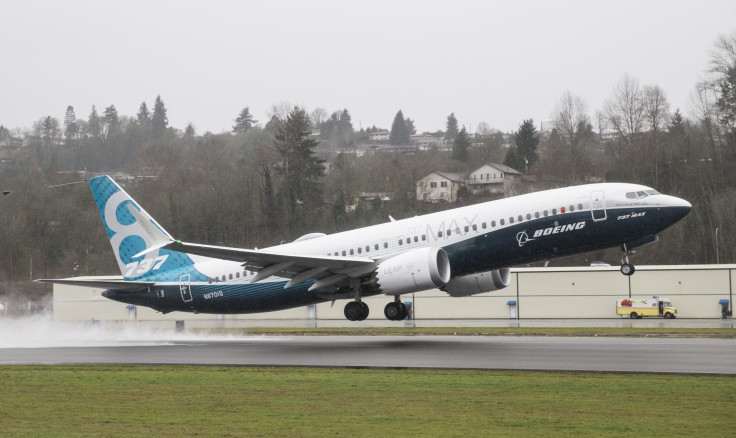When Will The Boeing 737 MAX Return To Service?

In recent weeks, the Boeing (NYSE:BA) 737 MAX has continued to make progress toward recertification, following two deadly crashes over the past year. In fact, Federal Aviation Administration (FAA) representatives recently told the International Civil Aviation Organization that the FAA may be able to clear the jet for a return to service by late June.
That said, the timeline for recertification isn't set in stone. Moreover, airlines won't be able to reactivate their Boeing 737 MAX fleets instantaneously. As a result, it seems increasingly likely that the 737 MAX will return to service during the month of August -- at least for domestic operators American Airlines (NASDAQ:AAL), Southwest Airlines (NYSE:LUV), and United Continental (NASDAQ:UAL).
Boeing and the FAA make progress -- slowly
On May 16, Boeing said that it had finished developing new software to address problems with the 737 MAX's "Maneuvering Characteristics Augmentation System" (MCAS) that contributed to fatal crashes in October 2018 and March 2019. At the time, Boeing had already operated 207 test flights with the new software, totaling more than 360 hours in the air.
The FAA and other aviation regulators around the world are now reviewing Boeing's software update. This analysis has been expanded to cover how pilots respond to emergencies in older versions of the 737, according to The Wall Street Journal.
The broadened scope of the review has delayed the recertification process. Last week, Boeing said that it was addressing information requests from the FAA, after which it would be able to schedule a certification test flight.
The recertification process has been further complicated by a loss of trust in the FAA among other aviation regulators -- not to mention the flying public. Luckily, an FAA-hosted summit of regulators from more than 30 countries on May 23 appears to have gone well. This reduces the likelihood of a big divergence between the FAA and other aviation regulators around the world regarding the recertification process.
Public and private remarks diverge
In public, FAA Acting Administrator Daniel Elwell has said that the FAA needs to follow its processes, rather than setting a target date for recertifying the 737 MAX. Elwell doesn't want anyone to cut corners in the ongoing safety review just to hit an artificial deadline.
Privately, officials have been less circumspect. Based on where Boeing and the FAA are in the process right now, there's a good chance that the FAA will be able to clear the 737 MAX for a return to service within a month or so.
Of course, airlines are eager to get their 737 MAX fleets back in service as soon as possible. For example, Southwest Airlines has 34 737 MAX 8s -- accounting for more than 4% of its fleet -- and would have even more, had deliveries not been halted in March. Within the U.S., American Airlines and United Airlines also have significant exposure to the 737 MAX, albeit not as much as Southwest. The airlines have had to trim their schedules during the summer peak season, thereby missing out on profitable revenue.
That said, airlines also recognize the need for a complete and transparent safety review. Getting the 737 MAX back in service a few weeks earlier won't be helpful if there are lingering safety problems. Indeed, it will be hard enough to regain the public's trust as things stand now.
August seems likely
Once the FAA lifts its grounding order, it could take up to a month for American, Southwest, and United to get their 737 MAX fleets ready for service again. It can take about 120 hours of work to get a plane ready to fly again after being parked in long-term storage, according to Bloomberg, and each of the airlines has more than a dozen planes that will need this maintenance work.
That's why the head of the International Air Transport Association stated on Wednesday that the 737 MAX was likely 10 to 12 weeks away from resuming commercial service. That would put the return to service sometime in August.
As of mid-April, American Airlines and Southwest Airlines had already removed the 737 MAX from their schedules through Aug. 19 and Aug. 5, respectively. By contrast, United Airlines had only canceled its 737 MAX flights through early July. Late last week, United bowed to the inevitable and extended its 737 MAX cancellations to Aug. 3.
Southwest and United may be able to get the 737 MAX back into service by early August as they hope, but it's not guaranteed. American's plan to reintroduce the 737 MAX two weeks later is definitely safer. On the other hand, American Airlines recently scheduled new flights on the 737 MAX for September, so the airline is clearly confident that the planes will be ready by then.
U.S. air travelers will have to endure a summer of especially crowded planes as airlines manage through the 737 MAX grounding during the peak season this year. But by sometime in August, the 737 MAX should be flying again, enabling airlines to get their fleet plans back on track.
This article originally appeared in the Motley Fool.
Adam Levine-Weinberg owns shares of Southwest Airlines and is long January 2020 $20 calls on American Airlines Group. The Motley Fool owns shares of and recommends Southwest Airlines. The Motley Fool has a disclosure policy.



















